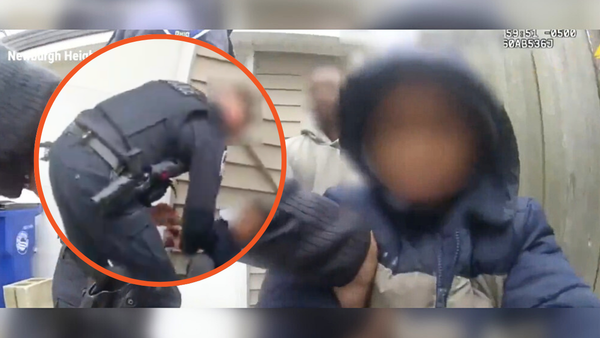
I'm an ex-barista, so I have a lot of experience in the world of coffee. Whether it was working the Christmas rush in my local Starbucks (don't remind me) or lovingly crafting artisanal flat whites at an independent coffee shop (please, do remind me), I've been there, done that.
Now, I'm on a mission to make the best home espresso I possibly can. I've got my arsenal of the best espresso machines, including Breville coffee makers and De'Longhi coffee makers, and Eureka grinders behind me. Hard life, right?
But growing more closely entwined with home espresso machines has made me realize that most people don't actually know how to get the most out of these machines. There's nothing wrong with that — espresso machines are confusing — so let me show you exactly how to level up your espresso and impress yourself.
You should customize shot volume

If you use your espresso machine right out of the box, it's likely that the shot volume is programmed to about 50ml. This is, to put it politely, a bit wacky.
The general rule of thumb is that espresso should follow 1:2 ratio. So if you dose 18g of coffee grounds, you should get 36g of espresso out. This means that the default shot volume of ~50ml is way too much.
As a result, you'll have a weak yet bitter espresso, with undesirable burned notes.
"But how do I know when my espresso is at 36g?" Let me introduce to you the best coffee scales. I've reviewed way too many coffee scales to count, and this is the affordable model I use every single day.
You could either place the coffee scale under your mug every time you pull a shot and manually stop the extraction once the espresso reaches your desired weight, or you could customize the shot volume manually.
If you want to customize the automatic shot volume, you'll need to consult your machine's user manual. Each espresso machine has a different way to do this: for example, on the Breville Bambino Plus, you have to hold down two buttons and then run water through the machine. There's little point me telling you how to do it on your machine as they all differ.
Personally, though, I don't have time for that. Especially when, depending on uncontrollable factors like bean porosity, humidity, grind evenness, this shot volume will differ day-to-day. As a result, I just manually start and stop extraction by pressing my machine's shot button.
You shouldn't use dual-walled portafilters

Most machines come with both single- and dual-walled portafilters, but some just come with dual-walled. If you're not sure on the difference or what any of this means, let me give you a quick rundown.
The portafilter is the metal basket where you put the coffee. There are many different types: the most common are single-walled and dual-walled. These are also known as unpressurized and pressurized respectively.
You don't want to use dual-walled/pressurized portafilters because they physically cannot make proper espresso. These metal baskets force the coffee water through a tiny little hole and aerate the liquid as it extracts. This means the flavor will be completely off, and the texture will be way too fluffy.
Here's what you should be looking out for.

As I said earlier, most espresso machines come with both portafilters. I want you to take the dual-walled portafilter and put it in the back of your kitchen drawer where no light shall shine upon it again. It's what she deserves.
If your espresso machine doesn't come with single-walled portafilters, don't worry. There's a workaround. Many espresso brands also sell first-party single-walled or bottomless portafilters. Bottomless portafilters are basically flat on the bottom (so no 'spout' like you might be used to) and look really, really cool.
If you've got a Casabrews machine, Casabrews sells bottomless portafilters for $38 on Amazon. If you've got a De'Longhi (the Stilosa doesn't come with single-walled portafilters in the U.S., for example), you can get third-party compatible portafilters on Amazon for around ~$40.

Usually, though, you won't have to buy another portafilter. Most machines I've come across do ship with both types of portafilter. Just make sure that you're using the one with the little grate on the bottom, not the single hole.
You'll definitely notice a difference in the flavor of your espresso, unless you're using pre-ground coffee, which brings me onto my next point...
You (probably) shouldn't use pre-ground coffee

Now, don't get me wrong, this is just me being a bit of a coffee snob. If you enjoy using pre-ground coffee, then that's fine. But I could never use pre-ground. It won't have the tart, juicy, fruity notes that I look for in coffee.
I hate dark roasted coffee, and, unfortunately, that's usually what you'll find in the pre-ground section. I am the kind of person who'd rather drink no coffee than bad coffee, so I'll only buy wholebean, specialty coffee.
To test coffee machines, I used a local coffee roaster called Hard Lines, and every single roast is utterly divine. If you're in the U.S., though, you won't be able to get Hard Lines beans.
My colleagues in the U.S. have recommended Atlas Coffee Club in the past, which is a nationwide coffee subscription/online delivery service.
If you start using wholebean coffee, you'll need a grinder. While most great grinders are expensive, I've tested enough now to know that there are a few exceptions to that rule. This is one of the most affordable grinders out there.
If you follow this advice, you should start noticing a major difference in the quality of your espresso. With properly ground beans, a single-walled portafilter, and accurate espresso volume, you'll be well on your way to being a barista worthy of a artisan coffee shop.
Follow Tom's Guide on Google News and add us as a preferred source to get our up-to-date news, analysis, and reviews in your feeds. Make sure to click the Follow button!







